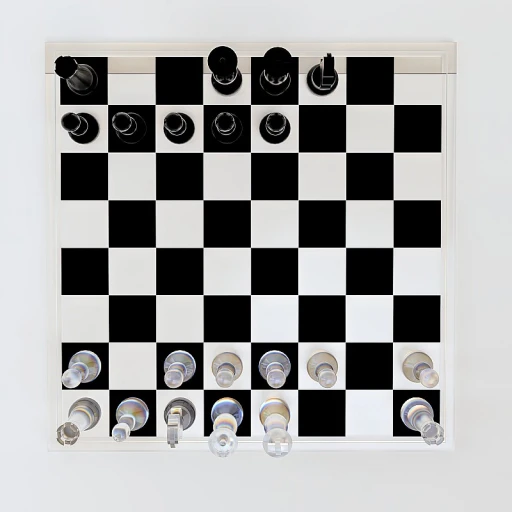
The Basics of DOT Drug Testing
Introduction to DOT Drug Testing Procedures
The Department of Transportation (DOT) mandates specific drug testing protocols to ensure the safety of public transportation. This testing is critical as it helps in maintaining a high standard of safety-sensitive positions, where impairment from drugs could lead to serious incidents or accidents. The DOT drug tests are comprehensive and strictly regulated, focusing on a range of substances to be screened. DOT drug testing primarily employs urine tests to detect a variety of drugs and alcohol in a person's system. The typical panel drug testing includes substances such as marijuana, cocaine, opiates, amphetamines, and PCP. These tests are crucial in identifying individuals using illicit drugs, ensuring that all personnel are in optimal condition to perform their duties safely.Types of DOT-Approved Drugs and Alcohol Tests
A variety of methods are employed in DOT drug testing:- Urine Drug Test: This is the most common form and is necessary for both scheduled and random testing. The urine test is reliable and widely accepted for its extensive detection window, making it ideal for detecting recent substance use.
- Oral Fluid and Hair Follicle Testing: Although not currently standardized in DOT testing, these methods offer different detection windows. Hair follicle drug tests, for instance, provide a longer detection period, which can reveal drug use from weeks to months prior.
- Alcohol Testing: This can be conducted through breath tests or other medical examinations. Alcohol testing is essential as it determines the blood alcohol content (BAC), ensuring it does not surpass the legal limits for safety-sensitive duties.
Time Frame of DOT Drug Tests
Time Frame Considerations in DOT Drug Testing
Understanding the time frame of DOT drug tests is essential for both employers and employees, particularly those in safety-sensitive positions. The Department of Transportation has specific guidelines for drug and alcohol testing, which require adherence to strict time frames to maintain safety standards. DOT drug tests typically involve urine analysis, which is the most common method due to its balance of cost-effectiveness and reliability. Urine tests can detect drugs used within the past few days to weeks, depending on factors such as the type of drug, individual metabolism, and frequency of use. The detection window varies:- Urine Drug Test: Generally identifies recent drug use from several days up to a week.
- Hair Follicle Drug Test: Offers a longer detection window, potentially identifying drug use up to 90 days prior. However, it is less commonly used in DOT testing due to higher costs and longer processing times.
- Oral Fluid Drug Test: Although not commonly used for DOT pre-employment screening, it provides an immediate detection of substances used in the past 24-48 hours.
Comparison with Other Drug Tests
Analyzing Time Frames in Different Drug Testing Methods
When it comes to analyzing the time frame of drug tests used by the Department of Transportation (DOT), it is essential to compare and contrast with other widely utilized methods. Each drug testing type offers a unique detection window, influencing how long after use drugs can be detected in the body.- Urine Drug Testing: For DOT drug tests, urine testing is the standard and preferred choice, particularly for identifying recent drug use. The detection window varies depending on the substance, typically ranging from a few days up to a week. Given its non-invasive nature and efficiency in screening for a wide range of drugs, urine testing remains popular for pre-employment and random screening.
- Hair Follicle Testing: Hair follicle drug tests provide a much longer detection window, spanning up to 90 days, offering a comprehensive overview of an individual's drug use history. However, these tests might not be suitable for short-term screening due to their inability to detect recent drug use effectively, usually because the drugs take days to be incorporated into the hair shaft.
- Oral Fluid Testing: Known for shorter detection windows, oral fluid tests are effective in detecting very recent drug use. Given their non-invasive nature and ability to be administered on-site, they are valuable in certain safety-sensitive roles where immediate detection is critical.
- Alcohol Testing: While not as extended in detection capabilities as drug tests, alcohol testing, such as breathalyzers, provides immediate results for alcohol consumption, ensuring that employees in safety-sensitive positions are not under the influence during working hours.
Implications for Employers and Employees
Impact on Workplace Dynamics and Compliance
Incorporating DOT drug tests into the workplace has significant implications for both employers and employees. These tests are crucial for maintaining safety-sensitive positions, ensuring that employees responsible for public safety are not under the influence of drugs or alcohol. The Department of Transportation mandates these screenings to prevent accidents and promote a safe working environment. Employers must navigate the complexities of drug testing, including choosing the appropriate type of test. While urine drug tests are common, hair follicle testing offers a longer detection window, capturing drug use over several months. This can be particularly beneficial for pre-employment screenings, allowing employers to assess long-term drug use patterns. However, the choice of test also impacts the workplace culture. Employees may feel uneasy about more invasive tests like hair follicle or oral fluid testing. Thus, clear communication about the testing process and its importance in maintaining safety standards is essential.Legal and Ethical Considerations
Employers must also be aware of the legal landscape surrounding drug and alcohol testing. Compliance with DOT regulations is mandatory, but companies must also consider state laws and employee rights. This includes understanding the role of the Medical Review Officer (MRO) in evaluating positive test results and ensuring that the testing process is fair and unbiased. Additionally, the implications of a positive drug test extend beyond immediate employment decisions. Employers need to have a clear policy on handling such results, including offering support for rehabilitation or considering the context of the test outcome. This approach not only aligns with legal standards but also fosters a supportive work environment.Enhancing Employee Trust and Engagement
Effective communication and transparency about the testing process can enhance trust between employers and employees. By clearly outlining the purpose of DOT drug tests and the potential consequences, employers can mitigate concerns and encourage a culture of safety and responsibility. Moreover, involving employees in discussions about drug and alcohol testing policies can improve engagement. Employers might consider providing educational resources about the effects of drugs and alcohol on safety and performance, reinforcing the importance of a drug-free workplace. In summary, while DOT drug testing is a regulatory requirement, its implementation carries broader implications for workplace dynamics, legal compliance, and employee relations. Employers who navigate these challenges thoughtfully can enhance workplace safety and foster a culture of trust and accountability.Challenges in Background Checks
Challenges in Ensuring Comprehensive Background Checks
The DOT drug test program is crucial for maintaining safety in transportation-related positions, where a drug-free work environment is critical. However, various challenges can complicate background check processes, both for employers and employees.- Diversity of Drug Testing Methods: Employers face several choices for drug screening, including urine, hair follicle, and oral fluid tests. While urine tests are the most common due to their cost-effectiveness and shorter detection window, hair follicle tests offer a longer window of detection, potentially identifying drug use from weeks or even months prior. The breadth of options can be confusing, especially in determining which method aligns best with company policies and legal requirements.
- Detection Windows and MRO Verification: The detection window is a key aspect when considering the most reliable screening method. Urine drug tests typically detect recent use, while hair follicle tests provide historical data on drug and alcohol consumption. Confirmatory tests by a Medical Review Officer (MRO) add another layer of complexity, ensuring that positive results are valid and accounted for before any employment decision is made.
- Legal and Regulatory Compliance: Employers must navigate a maze of compliance requirements, which can vary significantly depending on the state and federal level. The Department of Transportation (DOT) has specific guidelines for alcohol and drug testing for safety-sensitive positions, but discrepancies can arise when state laws impose other requirements.
- Integration with Broader Background Checks: Drug and alcohol tests are often part of a larger background check process. The integration and timing of these tests with other elements like criminal records and driving histories require careful coordination. Understanding these nuances is essential, especially considering different panel drug tests that might be used for pre-employment screening.
- Evolving Substances and Detection Technologies: As new substances become prevalent, and as testing technologies advance, keeping up to date with effective drug screening measures becomes a continuous challenge. Employers and employees alike must remain informed about new trends to ensure accurate assessments of fitness for duty. This is especially paramount for promoting safety-sensitive roles where impaired functionality could have severe repercussions.
Future Trends in Drug Testing and Background Checks
Emerging Innovations in Drug Testing
As we look to the future, the landscape of drug testing is evolving with technological advancements and changing societal norms. Employers and the Department of Transportation (DOT) are increasingly adopting innovative methods to ensure workplace safety and compliance. One significant trend is the growing use of hair follicle testing. This method offers a longer detection window compared to traditional urine tests, making it a valuable tool for identifying habitual drug use over a period of months rather than days.
Integration of Advanced Screening Methods
Besides hair follicle tests, there is a rise in the use of oral fluid testing. This method is less invasive and provides a shorter detection window, which is beneficial for identifying recent drug use. As technology advances, these methods are becoming more reliable and cost-effective, making them attractive options for employers conducting pre-employment screenings.
Enhanced Accuracy and Reduced False Positives
With the integration of advanced technologies, drug and alcohol tests are becoming more accurate. The role of the Medical Review Officer (MRO) is crucial in verifying positive results to reduce the incidence of false positives, ensuring that the results are accurate and fair. This is particularly important in safety-sensitive positions where the margin for error is minimal.
Regulatory Changes and Their Impact
Regulatory bodies are continuously updating guidelines to reflect the latest scientific research and societal expectations. For instance, the DOT's regulations on drug and alcohol testing are adapting to include new substances and testing methods. Employers need to stay informed about these changes to maintain compliance and ensure the safety of their workforce.
Future Challenges and Considerations
While technological advancements offer new opportunities, they also present challenges. Employers must balance the need for comprehensive drug screening with concerns about privacy and discrimination. As the field evolves, it will be essential to develop policies that address these issues while ensuring that drug testing remains a vital component of workplace safety.












